Does Influencer Product Seeding Work? Yes, If You Do it Right
Influencer product seeding is super effective if you have the right strategy. We explain why and how influencer seeding works and steps to improve...
Want to ramp up your brand’s influencer seeding efforts? This post can help! Here are eight influencer seeding strategies and tips for earning amazing content.
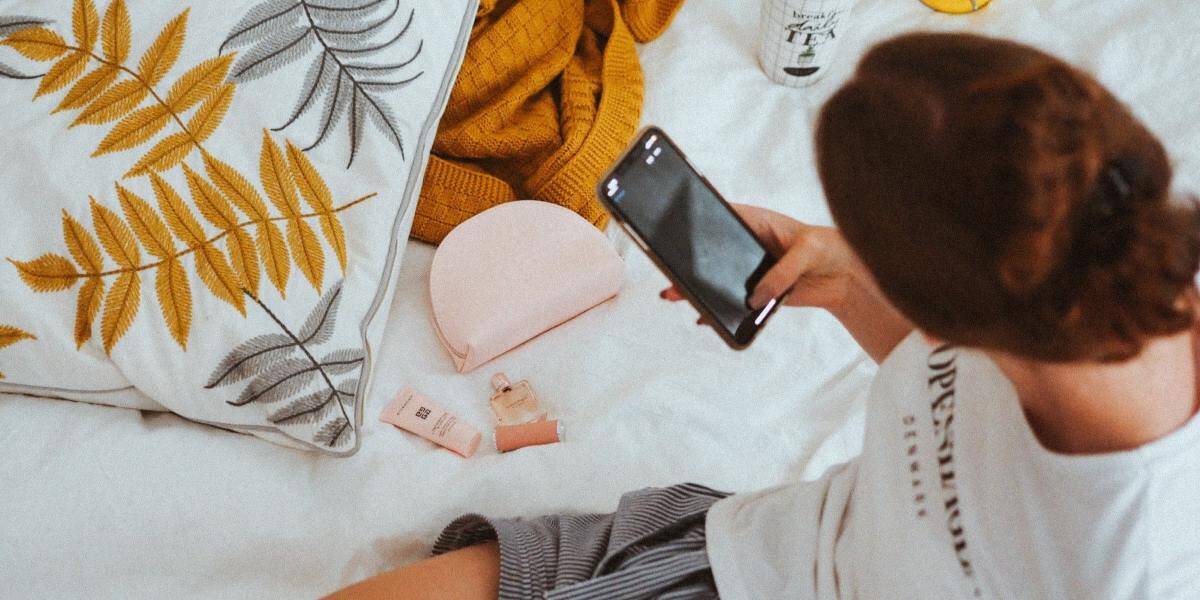

Influencer seeding involves sending products to influencers to earn word-of-mouth on social media. Seeding campaigns are especially popular on Instagram right now.
The idea here is simple: if a creator loves what a brand sends them, they’ll shout the brand out.
Much like gifting campaigns, product seeding helps brands achieve goals such as:
Having built a platform that's powered 75,000+ successful product seeding shipments, we know what it takes to run a successful campaign.
That’s why we put together this list of tips and strategies to help you build yours out!
Skip to Section 👇How to Build and Improve Your Influencer Seeding Strategy Setting Goals for Influencer Seeding |
Keep in mind that seeding is fair game for brands of all shapes and sizes.
Beauty. Food. Fitness. Fashion. Tech. You can send just about anything to content creators.
But no matter what you’re selling, the goal of influencer seeding is the same:
Encourage influencers to promote your products authentically and enthusiastically despite there being no strings attached.
Below we break down how to put together an influencer seeding strategy to make it happen.
Anything you can do to create a memorable experience for your influencers is a plus.
That means your interactions and shipments shouldn’t feel “one-size-fits-all.”
Ask yourself: how can you make a positive, impactful impression on your creators? Here are a few popular personalization strategies for product seeding to consider:
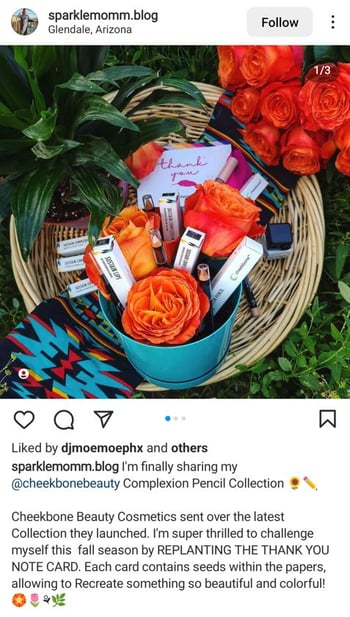
Source: @sparklemomm.blog
Remember: chances are you're not the only brand sending products to your influencers!
And that’s totally okay!
This illustrates the importance of standing out with your seeding campaign, though. You only have one chance to make an impact when it’s time to unbox your products. Personalization can give your gifted package the “wow” factor it needs to make a big impression.
This might seem like a no-brainer, right?
The thing is, many brands treat influencer seeding like a numbers game. This results in a ton of packages sent out to creators at random. Given the work involved in packaging and coordinating shipments, this is a huge waste of time. Not to mention a waste of product!
Remember: with product seeding, there’s no 100% guarantee that influencers will post. This is why it’s important to find content creators who are truly interested in your brand.
When in doubt, prioritize partnerships with influencers that tick the following boxes:
For example, it makes perfect sense for a brand like MyVegan to primarily partner with vegan content creators and fitness accounts.
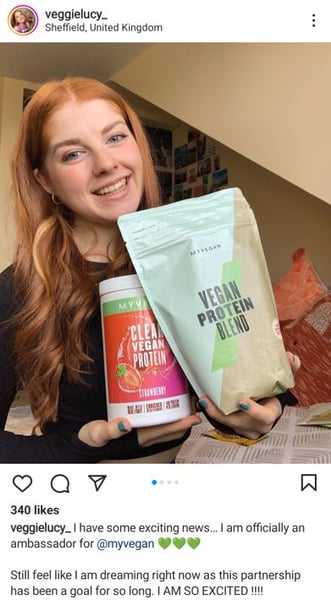
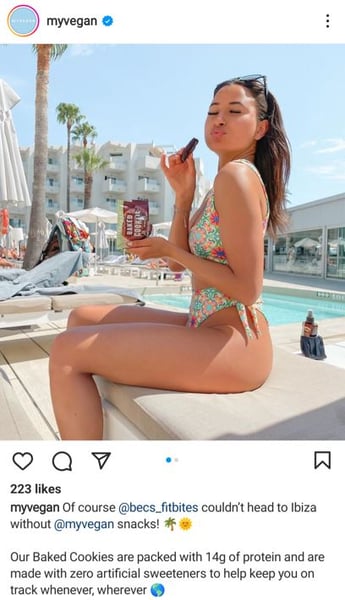
Source: @veggielucy_ / @myvegan
Remember: legitimate influencers will promote brands that fit seamlessly into their organic posts. The closer your creators resemble your potential customers, the better. It makes more sense to be “picky” and selective versus shipping out products to influencers at random.
No matter what you send as part of your seeding campaigns, you need to excite your creators.
The problem? Discount products often lack the “cool” factor that influencers desire for their content.
We get it! Brands don’t want to waste money shipping pricey products and then get ghosted. The reality, though? Influencer seeding is risky as content isn’t guaranteed without a contract.
But if you're selective and thoughtful with your outreach, the less likely you are to get ghosted.
Couple that with a compelling product and chances are you’ll earn the content you’re after.
Below is an example of a gifted post on behalf of Joovv featuring their portable red light therapy mask. For reference, this product retails for $600 USD. This highlights the lengths that brands will go to get creators to post about them.
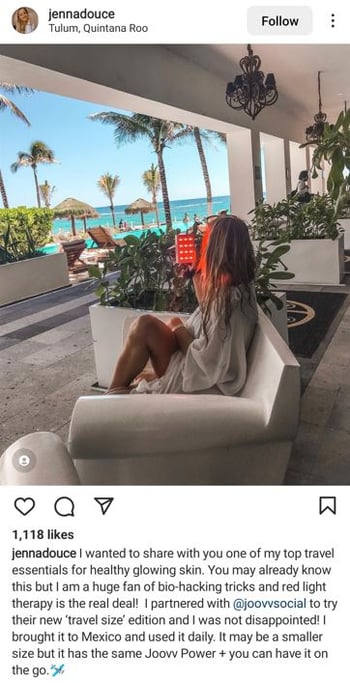
Source: @jennadouce
To be clear, you’re not required to send a product to influencers that match this price point.
That said, value exchange matters. To earn high-quality and authentic posts from creators, brands need to offer products that are relevant to influencers and their audiences.
If you primarily sell low-cost items or are on the fence about big-ticket products, this can be tricky.
Brainstorm how you can create high-value influencer seeding kits featuring multiple items. Even with less expensive products, a high volume of items at your influencers’ doorstep can delight them.
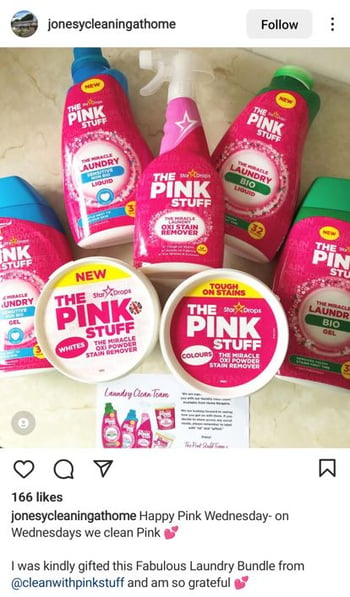
Source: @jonesycleaningathome
Do influencers love free stuff? Absolutely! But free products don’t mean great posts by default.
The key takeaway here is not to cut corners when it comes to influencer seeding. If you’re going to go through with putting together a campaign, don’t skimp on the products you send.
Again, your product seeding strategy should center around influencers that resemble your audience.
That doesn’t necessarily mean one audience or a single type of influencer, though.
Think about how your product might be perfect for influencers in a variety of niches. If so, awesome!
Check out how Woah Dough reaches two audiences via gifting. The brand partners with mommy bloggers and foodie influencers to show off their plant-based cookie dough.
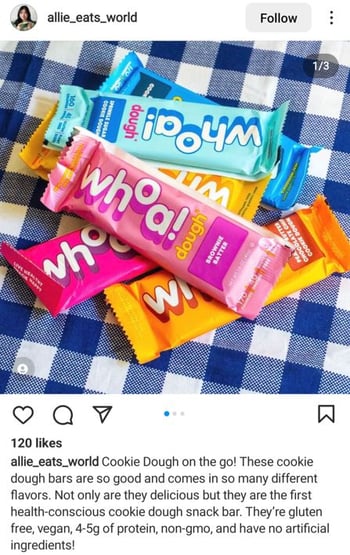
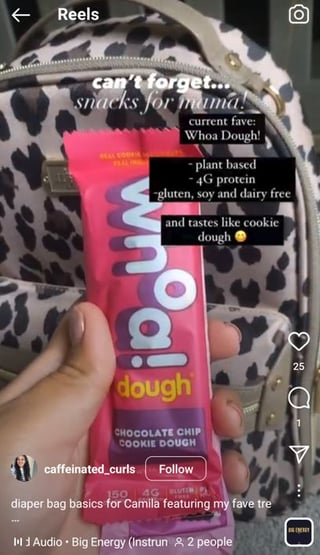
Source: @allie_eats_world / @caffeinated_curls
You may be surprised by the types of creators who get the most excited about your products. In our experience, micro-influencers often produce better content than creators with “bigger” accounts.
This highlights how seeding products can be a great learning experience for brands. These types of campaigns can be a crash course in influencer marketing. The downside is that product seeding isn't scalable in-house if you want to earn a high volume of posts from creators.
This is an important tip that often gets overlooked with seeding campaigns.
In most cases, brands send out seeding kits to creators but have no good way to follow-up or check in with their recipients. The whole process can feel very "spray and pray" and is nerve-wracking for brands.
But let’s say you’ve shipped out your products and are tracking your PR packages like a hawk.
Relax! This in-between time is a great opportunity to shoot your creators a quick follow-up email or DM, if possible. Here you can update them on the status of their products to build some anticipation.
Even if your influencers have the shipping info themselves, this is a simple courtesy. Likewise, this small interaction shows that you value your partnership.
And if there is a shipping issue, you can keep influencers in the loop as it gets resolved.
Fulfillment and shipping are among the most time-consuming tasks that can make or break any given influencer marketing campaign. Lag times, poor communication and broken items can tank a potential campaign before it has the chance to grow.
That's why Statusphere emphasizes a creator-first fulfillment experience. Our creators receive timely shipping updates from our software.
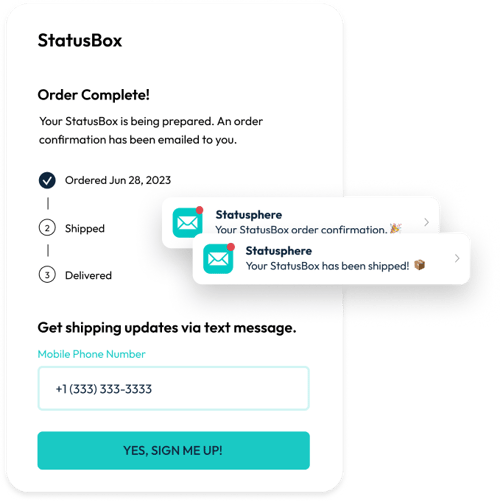
Also, creators receive their items in custom packaging with all orders shipped within 48 hours. 
If your seeding strategy is successful and people are posting, pat yourself on the back!
But your job isn’t done quite yet.
Make an effort to engage with your influencers by interacting with their content after it's posted. This means commenting on their product post and responding to followers if prompted. Doing so makes yourself visible to your creator’s followers as an added bonus.
Check out the positive and personalized comment from Pallure on the gifted post below.
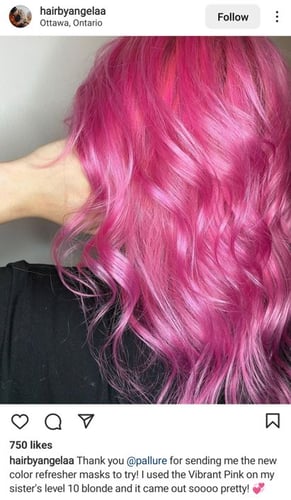
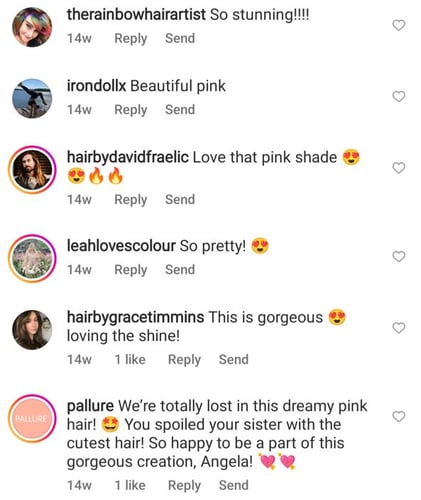
Source: @hairbyangelaa
These engagements can leave a positive impression on your influencers and target audience. Micro-influencers and smaller creators especially appreciate shout-outs from brands.
One of the key benefits of any product seeding or influencer gifting campaign is earning authentic content.
If an influencer creates a post that’s worth resharing, don’t hesitate to ask permission to do so.
Many brands on Instagram will repost their influencer content or post it to their Stories. Check out how Moody Lenses does exactly that below:
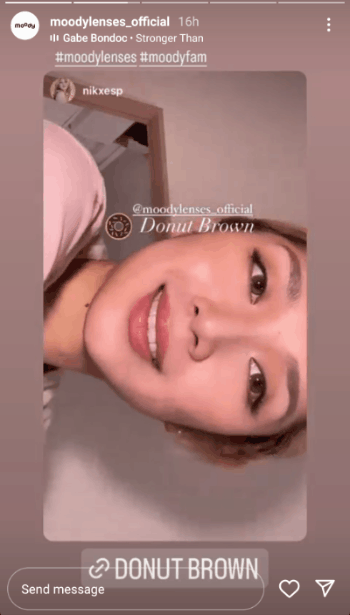
Source: @moodylenses_official
Remember: the value of running influencer campaigns is about more than just a single post.
Consider how you can reuse and repurpose influencer content again and again. This includes potential content for ads, emails and more.
In fact, we're seeing more and more of our brands incorporating their top-performing Statusphere content into their paid strategies with TikTok SPark Ads and Instagram Partnership Ads.
However, remember that you need permission to reuse your content from seeding!
It's been proven time and time again that influencer product seeding works.
But you won’t know if your strategy is successful until you look at the numbers.
As influencers begin to receive products and create posts, make a point to gather and evaluate your campaign data. This includes:
Based on our experience building a platform that's shipped over 75,000+ seeding kits, you can expect a 20-30% post rate depending on the engagement level of your influencer list.
Gathering this data may take some extra time and legwork on your part unless you're using an influencer platform that aggregates your key campaign metrics. Your numbers will clue you in on whether you generated the results you were looking for.
Before you start sending products to influencers, it's essential to set clear goals and maintain the right expectations with your outcomes. To recap, here are some common goals to consider:
Earned media. For starters, measure brand mentions and social media engagement both during and after a seeding campaign. In short, track how many people are talking about your brand and how many views the content receives.
Repurposable UGC. In some cases, seeding campaigns can result in UGC to promote across your marketing campaigns. Don't forget that you must obtain content usage rights if you plan to use your seeding content in social ads or elsewhere. You can do this through manual outreach, a contract or an influencer seeding platform (like Statusphere!) with built-in usage rights.
Good question! Especially if your ultimate goal from influencer seeding is UGC. Below is a snapshot of the types of influencer content you can typically expect from a seeding campaign.
Unboxing videos are among the most engaged-with video formats across social media, particularly on TikTok. Viewers love to see creators' authentic reactions and first impressions of showcasing a product, especially when a surprise PR package ends up delighting the creator. Influencer unboxings have a built-in hook as viewers want to see what happens, often resulting in higher view counts and engagement by default.

Depending on the product, creators might do a full-blown review or product breakdown with items from a seeding kit. This is common among both beauty and food brands. Seeding kits are an opportunity to earn unfiltered feedback from influencers. As a result, reviews from product seeding feel more "real" and are valuable to viewers who crave authentic opinions from creators.


These types of influencer videos sort of combine the two above. With hauls, creators showcase everything they've received from a seeding kit. While the creator may not do a full-blown review or how-to featuring the products, viewers love seeing everything a creator has received and tend to ask questions in the comments. This drives further engagement and can inspire future content from creators.

These product seeding examples highlight the value of sending products to influencers for the sake of earning social proof and UGC.
Done right, product seeding can really level up your influencer marketing efforts.
Once you get the ball rolling with creator posts, you can generate ongoing content and social proof. Not to mention getting your brand in front of thousands of new potential customers.
The problem? The process of sending products to influencers at scale is an uphill battle if you're trying to do it all in-house. Repeating the process above with hundreds of creators requires an expert team and vetted creator network that can guarantee authentic content.
And that's exactly what Statusphere's platform brings to the table.
Our automated product seeding platform programmatically matches brands with vetted influencers from our creator community. We've already generated 75,000+ posts for 400+ consumer brands. We help brands send products to creators at scale, either through pure seeding campaigns or influencer partnerships that guarantee content.

With advanced matchmaking, powerful analytics and creator-first fulfillment technology, our team of creators and campaign experts empower brands to scale their content in a fraction of the time.
Want to learn more about how our platform works? Get in touch with our team to see how we can maximize your influencer seeding ROI with content at scale.
This article was first published in November 2020. It was last updated August 30, 2024.

Influencer seeding means sending free products to influencers with no obligation for them to post about it. Seeding collabs are not pre-negotiated. Creators might sign up to receive seeding kits from brands, otherwise most seeding campaigns target prior customers.
The goal is to get influencers to share posts about free products with their audience. Through seeding, brands can earn word-of-mouth and genuine content at scale by sending seeding kits to high volumes of creators.
Influencer seeding can be less time and resource-intensive as a result compared to traditional influencer marketing campaigns which involve one-on-one negotiation and coordination. The caveat is that there is no obligation for creators to post.
An influencer seeding kit is a curated package sent to creators. These kits typically include products, complementary freebies and additional marketing materials.
The goal of a kit is to make the unboxing experience memorable and to provide influencers with everything they need to create share-worthy content.
Influencer seeding and influencer gifting both involve sending free products to influencers. That said, they involve different purposes and expectations.
Influencer seeding is about generating organic, authentic content without any obligation for the influencer to post. Creators aren’t necessarily aware that they’re part of a seeding campaign until they receive a product. Seeding campaigns are not pre-negotiated and there are no expectations to post.
Influencer gifting comes with an expectation (either implied or explicit) that the influencer will share the product on their social media upon receiving it. Gifting is more transactional, focusing on immediate exposure and content in exchange for free products (and other potential forms of conversation).
Benefits for Brands
Benefits for Creators
Influencer product seeding is super effective if you have the right strategy. We explain why and how influencer seeding works and steps to improve...
Do your product seeding kits exceed creators' expectations? Nail your next round of PR packages with these ideas and examples of influencer seeding...
Product seeding programs featuring influencers can build awareness at scale. Below we dig into popular types of PR seeding campaigns for product...
Be the first to know about the latest tools, trends and strategies in influencer marketing for brands.